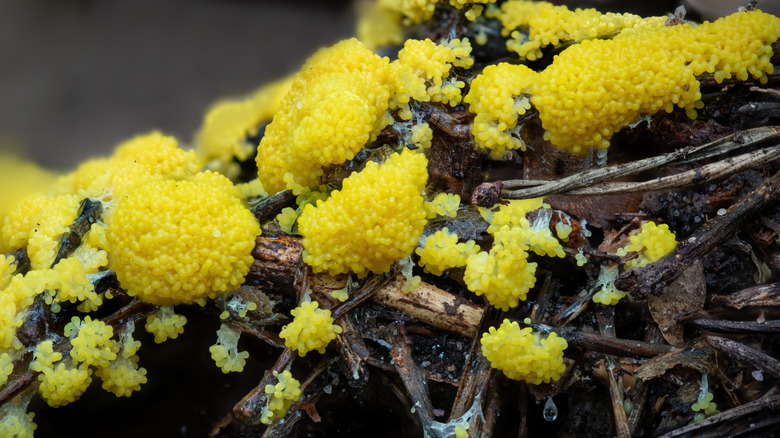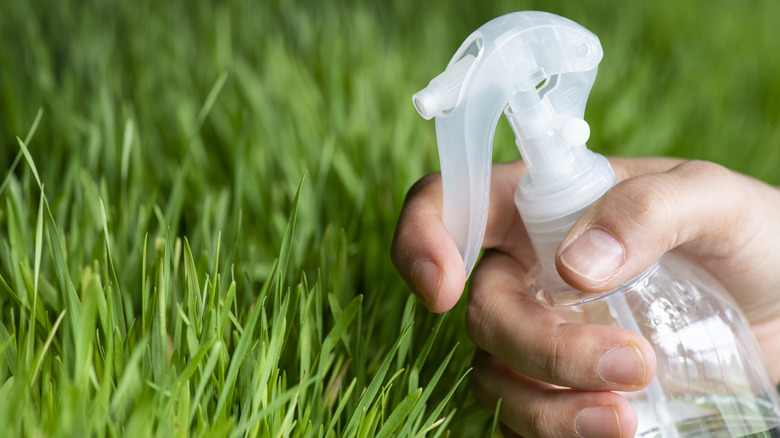Use A Common Bathroom Staple To Knock Out Slime Mold In Your Yard
The same hydrogen peroxide you have stashed away in your bathroom medicine cabinet can remove slime mold, making this an easy way to maintain your garden and yard. Slime mold is not a fungus but rather a single-celled organism that can (believe it or not) move to eat its food, which is mostly different strains of bacteria.
And unlike fungi, which have a chitinous cell wall, which is tough and rigid, slime mold has a cellulosic cell wall, which is thin and flexible. Once hydrogen peroxide is added to these cells, the chemical reaction generates oxygen very quickly, causing the removal of the slime mold.
If you see a blob-looking thing on your garden plants or yard that is yellow, white, or red and resembles something unsightly that a dog threw up, you likely have slime mold. Below we discuss how to use hydrogen peroxide efficiently to remove slime mold and restore natural beauty to both your lush yard and your vibrant garden.
The perfect recipe for slime mold removal
To use hydrogen peroxide to remove slime mold from your yard and garden, gather 3% hydrogen peroxide (nothing more than 3%, as this could harm your plants), water, a spray bottle, protective gloves, and a soft-bristled scrub brush. First things first — start by putting on your protective gloves to protect your precious hands from any potential rash. Then, mix one part hydrogen peroxide with nine parts water in your spray bottle.
If you have large patches or clumps of slime mold, manually scrape it off with a gloved hand to expose the base of the mold problem. Apply the solution directly onto the slime mold. If you have a particularly covered or stubborn spot, you can scrub in the solution with a scrub brush. After five or so minutes, rinse with fresh water. You can repeat this process if needed, but wait for a few days — if you rush the process, you could damage the plants.
Before spraying this mixture all over your garden or yard, test it on a small area first (like on the back part of your home). That way, if any of your plants have an adverse reaction to it, it's not highly noticeable. Using hydrogen peroxide in your garden, no matter the type, is safe, so long as you use 3% hydrogen peroxide and properly dilute it.

